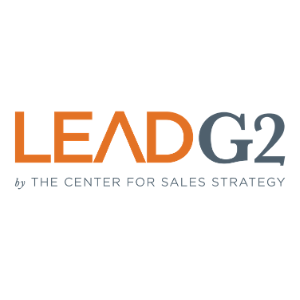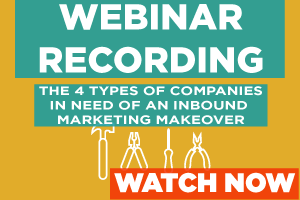 Recently I wrote a blog post that discussed the ROI of Inbound Marketing programs and what you should expect after the first year. This original post was created due to the frustration that first year inbound marketers sometimes have with not being able to measure the impact of their efforts in a traditional sense.
Recently I wrote a blog post that discussed the ROI of Inbound Marketing programs and what you should expect after the first year. This original post was created due to the frustration that first year inbound marketers sometimes have with not being able to measure the impact of their efforts in a traditional sense.
The post goes on to ask what would happen if you doubled your efforts instead of quitting after the first year? Disappointed in the Results of Your First Year of Inbound Marketing?
That blog post created some additional discussions on LinkedIn and a few other places about how to analyze results, bench marketing, and tracking ROI in year one. Which led to another blog post… this one.
Measuring Inbound Success in Year One
During the inbound planning day that all of our clients participate in when getting started with their inbound initiative, the topic of goal setting and benchmarking is discussed towards the end of the day. It’s at this time that savvy marketing managers and business owners start digging into the question of ROI and trying to determining how many visits and leads they need to get in order to close enough business to have a positive or multiple ROI.
It’s actually a rather simple formula:
Visits 1,000
People coming to your website
Leads 10
These are visitors that filled out a contact form of some kind.
This would be a 10% conversion rate (that’s really high by the way).
Customers 1
These are leads that have actually become customers and purchased some type of product or service from you. This is a high close rate as well… this would mean you close 1 out of 10 leads. Which is great but not realistic for most businesses.
So you can take the percentage of leads to visits (conversion rate) and your leads to customer rate (close rate) and you can estimate your leads and customers based on traffic or visitor numbers.
How to Set Benchmarks for New Blogs
This is where it gets tricky for new blogs and websites. Without having any historical data to rely on it’s very difficult to know what an appropriate goal is for visits or leads for those first 3 months until a benchmark is established.
HubSpot has benchmarking data for thousands of customers that show you the average visits and average conversion rates for the top performing client and the average performing clients. You can use some of this data to get you in the ballpark for estimating your conversion rates and close percentages in those first few months.
Increasing Leads and Customers Month After Month
To increase the number of new customers you get in a month, assuming the other variables stay the same you would either need to a) increase your visitors b) increase your conversion rate or c) increase your close rate. Each of these are great ways to increase your bottom line and it’s important to keep tabs on each of these as any of these decreasing will impact your results.
Upwards and to the Right
Where to go from there? It's quite easy. With almost all of your inbound metrics (visits, leads, social media traffic etc.) you want to see the charts moving upwards to the right. That means that over time you are increasing these numbers.
ANY MOVEMENT IN THE OPPOSITE DIRECTION (that’s to the left) should trigger a warning sign that something is not working, needs greater emphasis, or a past month had a variance that needs to be examined.
After these first 3 or 4 months you should start to get a good feel for your analytics and be able to start factoring in some monthly growth and forecasting leads.
A few things to note: The first month that you launch your blog sometimes experiences higher traffic rates due to developers and your internal team taking a look at your awesome new blog. It’s really in the second and third month that you can start to see trends develop and should set as the benchmark for measuring progress.
One last caveat… if you see growth in top line visits but notice that the conversion rate (visits to leads) or close rate (leads to customers) is going down you need to take a look at your conversion pages (landing pages), and possibly make some changes so that you get more visitors filling out forms or doing a better job nurturing leads. This is where A/B testing can come in handy or making the smallest of tweaks (like increasing the size of a button or changing the language in a offer). Even with higher website traffic a decrease in your conversion rates can lead to poor results, even for a highly trafficked site. Another way to increase your conversion rates is to add additional call to actions on highly trafficked pages, which can lead to a rapid increase in leads. We have some clients that get the majority of their blog traffic from old blogs that they have written that do very well in search. So optimizing these pages with effective call to actions is a smart thing to do.
If you need someone to take a look at your website and analyze how you are doing I would be more than happy to help. Believe it or not, I enjoy quantitative analysis. After all, I was a finance major.
Watch the prerecorded webinar about the 4 Types of Companies in Need of an Inbound Marketing Makeover and learn more about how to be successful with inbound marketing.
.png)






Leave a Comment